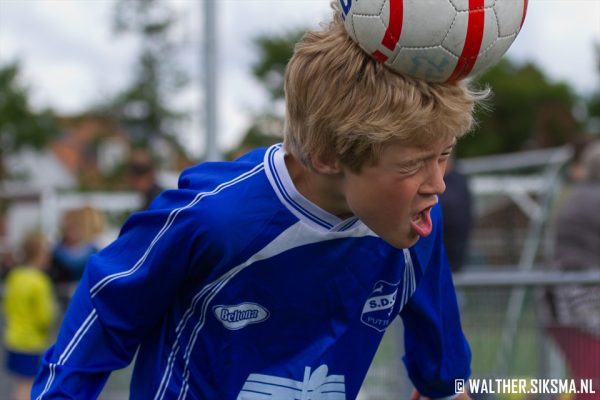Heads-Up! What Research Says About Soccer Headers, Concussions

As soccer’s popularity skyrockets nationwide, whether heading the ball carries an undue risk of concussions is a topic of rising interest. And while a new study has provided some answers, a UNC Charlotte CHHS expert warns that questions still remain.
Published in The Journal of the American Medical Association Pediatrics, the study evaluated the causes of concussions in a large sample of high school soccer players.
Researchers found while attempting a header does indeed carry a risk of concussion, it’s collisions with other players, not head-to-ball contact, that usually does the damage. The data show that heading is the most common soccer-specific activity (i.e., shooting, throw-ins), responsible for concussions, at around 25 percent. Yet, even in the context of headers, player-to-player contact was the mechanism responsible for the concussion in around 70 percent of cases.
Bret Wood, clinical coordinator of the athletic training program at UNC Charlotte, said this doesn’t surprise him at all.
“As two or more players attempt to control the ball with their heads the often unintended consequence is striking an opponent’s head. Obviously, an opponent’s head is much harder than a soccer ball.”
The findings arrive in an atmosphere of, and in response to, escalating public concern over the relationship between headers and brain injuries. Some have even suggested banning the practice in youth soccer, including luminaries of the sport like Brandi Chastain.
Chastain and others say their greatest concern is not that individual headers pose a high risk of injury, but that hundreds of contacts between a persons head and a soccer ball over a multi-year career could be dangerous.
Wood agreed that the long term consequences of “non-concussive head trauma” are not yet fully understood, but stopped short of saying the sport has a serious issue.
“The problem right now is trying to understand the long-term significance of mild brain trauma in sport. I think it is too early to say that the sport has a concussion problem. With the fear that mild brain trauma in sport may lead to long-term problems, many sports, including soccer, are going to take steps to make the sport safer though.”
Studies on the effects of repetitive head impacts from striking a soccer ball have been mixed, leading a recent publication on the topic to conclude, “studies that have directly assessed changes in cognition related to heading a soccer ball have failed to establish any relationship between heading and neurocognitive changes.” As questions on the effects of repeated subconcussive impacts linger, the fact remains that concussions are on the rise on the soccer pitch. Just how to address that is uncertain.
The study’s authors argue that since player-to-player contact is the most frequent concussion culprit, better policing it might be an answer. While this sounds like a good idea, Wood said implementation might be a challenge.
“Most concussive head-to-head contact is incidental. How does one police incidental contact?”
At the end of the day, injury-minded reform in any sport often faces an obstacle far more significant than logistical challenges: the game’s constituents. Wood said health professions trying to change the rules to make a sport safer have to first understand its culture.
“Coaches teach and value the game they played and know. The coaches are the keepers of the sport. Therefore they often view significant rule changes as “ruining” their sport. I think it is important for individuals who suggest changes to be viewed as knowledgeable allies by the coaches.”
by: Wills Citty
“IMG_4915” by Walther Siksma is licensed under CC BY-NC-ND 2.0
“Header” by Anthony Gattine is licensed under CC BY-NC-ND 2.0